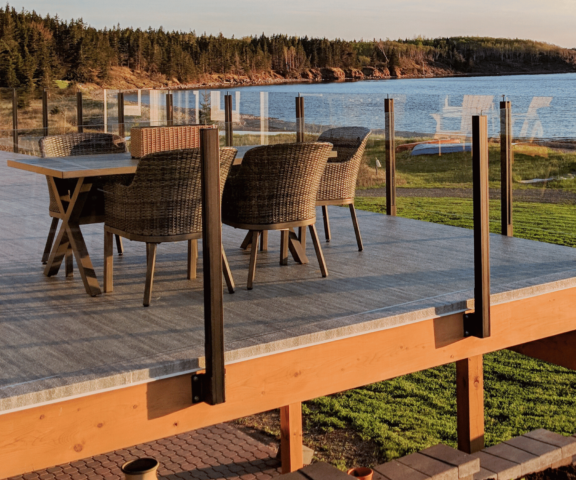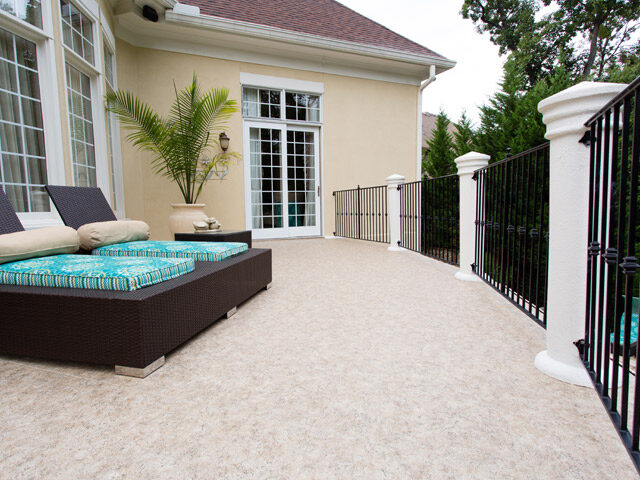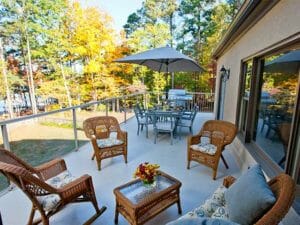USA: 1-800-338-3568 | CANADA: 1-866-591-5594
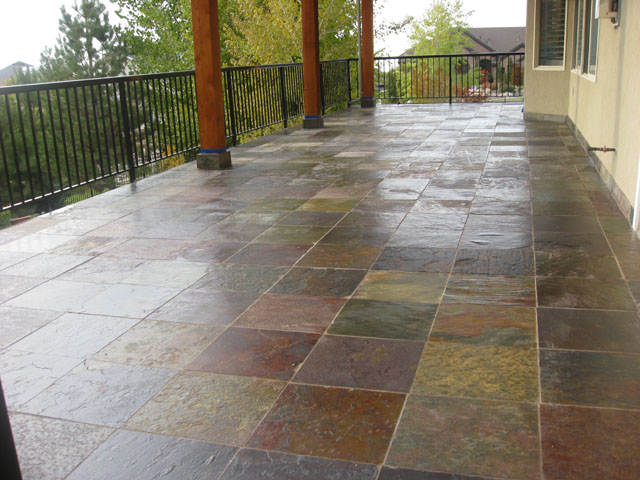
What You Need to Know to Avoid Leaky Tile Decks with Tiledek Waterproof Membrane: Part 2 – The Alternatives
Alternative Methods of Waterproofing Under Exterior Tile
In part one of this four-part series of detailed questions about Duradek Ultra Tiledek membranes we explained what Tiledek is, why waterproofing under exterior tile is essential in outdoor tile applications, specific details on evaluations and testing results on Tiledek as a roofing membrane, and the typical methods of installing outdoor tile.
This week, we will discuss the alternative methods of waterproofing under exterior tile, and why Tiledek is the superior choice.
What does Tiledek compete with?
The answer to this question depends upon the deck being over living quarters or not. Obviously if it is over living quarters, then the membrane must be a roofing membrane and more importantly, it must be installed with roofing principles in mind. Should the deck not be over living quarters, there might be no building code requirement that the membrane is a roofing product but the installation details should be no less stringent considering the consequences of leaks. Water intrusion can cause very expensive damage to the structure and we believe all waterproofing jobs demand the attention of a professional.
For the purposes of this discussion, we will separately deal with roofing and non-roofing applications.
For Roofing purposes
Torch applied or self-adhering modified bitumen roofing materials:
Modified Bitumen (MB) is asphalt that has had modifiers added to it to give it plastic or rubber-like properties. The most common types of modifiers being used are APP (Atactic Polypropylene) and SBS (Styrene Butadiene Styrene).
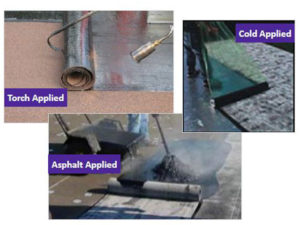
Rolls of modified bitumen membrane come in widths of 36″ (0.9 m) to approximately 39″ (1 m) and cover an area of approximately 100 square feet to 112 square feet.
Modified Bitumen roof systems consist of one, two, or three-ply systems. (Base sheets with no cosmetic finish and cap sheets) The cap sheet membranes may be applied using a torch (the back of the sheet has extra asphalt on it which, when heated, bonds to the substrate) or be self-adhered (removing a release paper on the back exposes a sticky surface which adheres to the substrate).

To the best of our knowledge, none of the manufacturers of Modified Bitumen materials supports tile installations over top of the roof membrane and therefore provide no promise that it works and certainly no guarantee. In addition, the asphalt in these products is not compatible with the mortar in the thinset or the grout lines and may bleed through causing a discoloration.
More importantly, when the MB softens as it heats up it can be compressed and may allow the tile or the grouting to crack from the movement from traffic on top. Any product that is designed to have tile installed overtop will have test results from the Robinson test (ASTM C627) to verify it is capable of supporting the weight of people and equipment.
See Tiledek Techtalk #106 – 10 Reasons Not to Use Modified Bitumen

Roof membrane plus a thickbed mortar system
The traditional method of providing roofing protection under tile would be to install a suitable roofing product like PVC, EPDM, TPO, modified bitumen or liquid applied urethanes, etc. with a thickbed mortar system on top to which the tile is attached. (It is important to know whether or not the manufacturer supports the use of their product in an application like this.) The tile may be “uncoupled” from the mortar bed or the mortar bed uncoupled from the roofing membrane or both. There may be a drainage layer above the roofing membrane to allow any moisture that gets in to escape along the drainage plane.
This system is very expensive and quite thick (at least 1-½ inches above the membrane). There may be as many as 7 or 8 layers involved in the system. For examples of what they may look like, go to http://www.schluter.com/ and see their balcony details.
Either Tiledek or Duradek Ultra would make for suitable roofing membranes under this type of system. Duradek does warranty its product for this application.
Note: In Canada, on wood framed structures (part 9 of the National Building Code) all decks and balconies are required to use an approved roofing membrane.
Non-roofing applications (referred to as “waterproofing” membranes)
The first thing you will notice when researching the products that are available for waterproofing decks and balconies to which tile will be applied is the lack of the word “roofing”. Most manufacturers of these systems want nothing to do with the details, the headaches and the liabilities involved in roofing. You will notice details that we would not even consider using in a non-roofing application (such as finishing a membrane on the flat horizontal surface without turning it over the edge and then caulking the leading edge). Most of the details you see are for concrete decks and balconies, not for the wood frame construction, which we are most likely to be dealing with.
Why is Tiledek superior to the alternatives for waterproofing under exterior tile?
As you can tell from the extensive list of other products that are available for “waterproof” applications under tile, there are very few who claim to be roofing products. Most of the details on the websites of the products are meant for waterproofing concrete balconies and ARE NOT an “apples to apples” comparison to the kind of waterproofing we do with our materials.
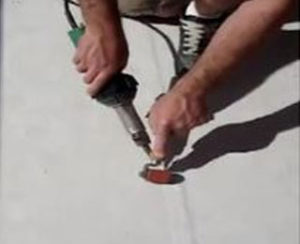
We treat each and every deck as if it was a roof and we detail accordingly. It doesn’t take much of a study to see how superior our details are. But the most significant reason why Tiledek is superior to all the other alternatives is the network of professional applicators that install the product. Duradek (and therefore Tiledek) is only sold through a network of businesses that have been trained. There is no other way to get the product installed. That means huge protection for the building owner. THE MOST IMPORTANT PART OF THE PROCESS IS THE CONTRACTOR WHO CARES ABOUT DOING IT RIGHT.
Waterproofing under exterior tile performance guarantee
Our primary responsibility is to protect the building from water finding its way in. Regardless of the success or possible failure of the tile overlay, we can GUARANTEE our customers that their home will be protected from water damage.
As far as the product is concerned, you can clearly see the superiority of a 60-mil layer of the same PVC we use for walking roof decks to provide the waterproofing protection needed. Many of the systems we’ve identified are very thin layers of liquid (20 mils). Some of the sheet systems are only 20 mils or less and even the thickest are only 40 mils. The seams of the sheet materials are done with liquid seam sealers and we know how ineffective that has been over the years. Some of the thicker “solutions” are very soft rubber that could allow too much movement of the tile and may promote cracks in the grout or the tile. Clearly, Tiledek is to be considered as the superior system of waterproofing for exterior decks or balconies overlaid with tile.
If you have an outdoor tile project and would like to speak to a Tiledek professional, contact a Duradek Dealer near you.
See Tiledek Techtalk #107 – 10 Reasons to use Duradek Ultra Tiledek and check back next week for “What You Need to Know to Avoid Leaky Tile Decks with Tiledek Waterproof Membrane: Part 3 – Installation”.

